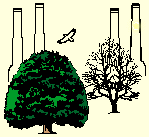The area covered by the park was cultivated land, part of the Clapham and Stockwell manors until it was developed in the first half of the 19th century.
Although Larkhall Park is a relatively new park, it appears that it was conceived around 1943. In April 1941, the then minister of Works and Planning, Lord Reith, following bomb damage and never fully addressed housing problems affecting London, asked the LCC to prepare a radical plan for London, to improve housing, transport and open spaces. This led to the County of London Plan.
Their brief stated that they should be bold, ignore planning difficulties and that special acts of parliament would deal with vested interest and other obstructions standing in the way. They set about identifying areas of London deemed to be lacking in open spaces.
Their Open Space Deficiency map shows a large shaded area covering parts of Brixton, Stockwell, and Nine Elms. Their Open Space Plan, shows a green space covering the area between Wandsworth Road, Lansdowne Way, Larkhall Lane and Union Grove. The area covered some 27 acres.
The decision to go ahead with this proposal was taken by the LCC on 6th March 1946. It seems that repairs to properties were still carried out in the late forties and correspondence exists dated 1949 from local residents requesting the LCC to confirm rumours that compulsory purchases orders would be forthcoming and that the area was blighted. It appears that rumours preceded any official announcement that may or may not have been made.


This area seem to have been chosen because it was in a reasonably central position in the open space deficient area. There was bomb damage but it would not have justified razing the area to the ground. A map dated 1951 highlight areas designated as slums, but it could have been a self fulfilling prophecy. Compulsory purchases started in the early 50's and went on for nearly three decades. There were lengthy negotiations with landlords, and occupants, whether owners or tenants had to be re-housed.
Plans drawn in 1965 show that it was still the intention to build the park over the planned 27 acres. However, in 1971 the implementation of Larkhall Park was transferred from the GLC to Lambeth Council. The construction of the present park started in 1974.
Because of budget constraints, Larkhall Park today only occupies half the original proposed area. The remaining houses on the perimeter of the park were designated by Lambeth Council in 1983, the Larkhall Conservation Area.
Naming of the Park
The decision to give the park its present name was taken by the GLC on 31st January 1967. Until then, it had been referred to as the Wandsworth Road Open Space.
Two suggestions were made by Lambeth, Courland Park and Southville Park, on the grounds that all of Courland Street, Southville and most of Courland Grove would disappear on completion. They were rejected on the grounds that these names had no strong historical connections. Lark Hall on the other hand, may have been a substantial country house which later became the Lark Hall tavern and tea gardens, where the present Larkhall tavern stands. It gave its name to Larkhall Lane. The name appears on John Rocques' map of 1745. And Larkhall Lane was to be the south eastern boundary of the Park.



